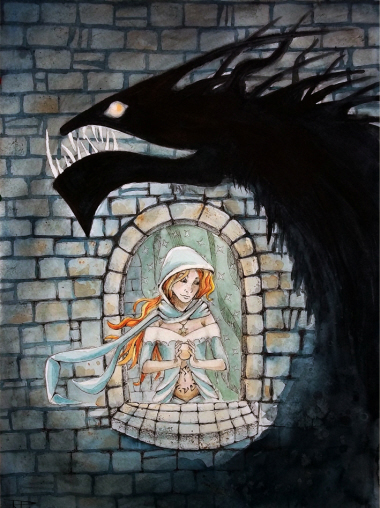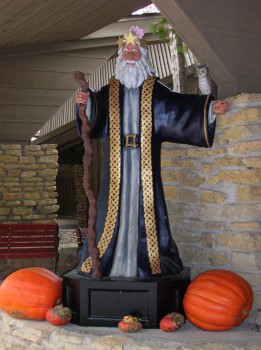Adventure on Film: Terry Pratchett’s Hogfather
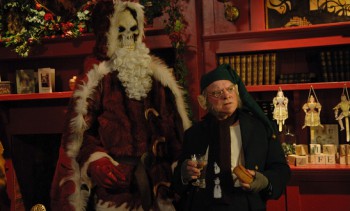 Having been all but dared, following my rather critical summation of The Color Of Magic (2008), to view a subsequent Pratchett adaptation, Hogfather (2006, made for TV), I confess I embarked on this quest with great trepidation, especially when I learned the production team responsible was essentially identical to that assembled for Color.
Having been all but dared, following my rather critical summation of The Color Of Magic (2008), to view a subsequent Pratchett adaptation, Hogfather (2006, made for TV), I confess I embarked on this quest with great trepidation, especially when I learned the production team responsible was essentially identical to that assembled for Color.
However, I am happy to report that Hogfather is a much superior effort. First, the comedy is spot on. Second, the concept of assassinating Santa Claus (or whatever) is fine dramatic fodder. Third, the film continually asks questions that we (the viewers) really want answered.
Questions such as, who is this Susan woman who looks like Keira Knightley (but turns out to be Downton Abbey‘s Michelle Dockery), and why exactly is she posing as a monster-fighting governess, when it’s perfectly clear she’s some sort of extremely powerful something or other –– and when do we get to find out what?
Great art has been made from less.
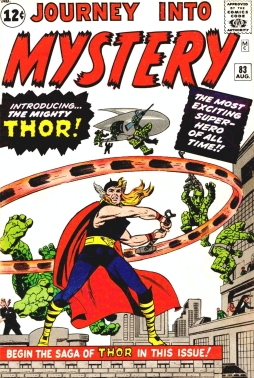 Journey Into Mystery first appeared in 1952, one of a number of anthology titles from publisher Martin Goodman’s line of comic books. Over the years, the title featured a lot of short horror, fantasy, and science fiction tales, many of them collaborations between editor/scripter Stan Lee and artists like Steve Ditko and Jack Kirby. Until 1962. At that point Goodman’s comics were beginning to change direction, following a revival of interest in the super-hero genre. A team book, The Fantastic Four, had taken off. A solo book had followed, The Incredible Hulk. Heroes would now be his company’s main product, and the line would soon come to be known as Marvel Comics. The horror anthology books would be taken over by recurring super-hero characters, and Journey Into Mystery would be the first of the bunch. So with issue 83, in August 1962, in a story credited to Stan Lee and artist Jack Kirby, it introduced its new lead: the mighty Thor, Norse god of thunder.
Journey Into Mystery first appeared in 1952, one of a number of anthology titles from publisher Martin Goodman’s line of comic books. Over the years, the title featured a lot of short horror, fantasy, and science fiction tales, many of them collaborations between editor/scripter Stan Lee and artists like Steve Ditko and Jack Kirby. Until 1962. At that point Goodman’s comics were beginning to change direction, following a revival of interest in the super-hero genre. A team book, The Fantastic Four, had taken off. A solo book had followed, The Incredible Hulk. Heroes would now be his company’s main product, and the line would soon come to be known as Marvel Comics. The horror anthology books would be taken over by recurring super-hero characters, and Journey Into Mystery would be the first of the bunch. So with issue 83, in August 1962, in a story credited to Stan Lee and artist Jack Kirby, it introduced its new lead: the mighty Thor, Norse god of thunder.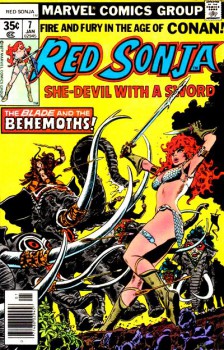
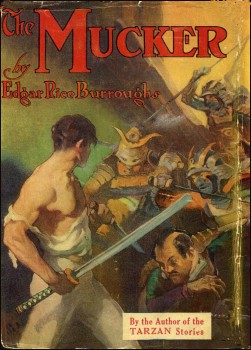
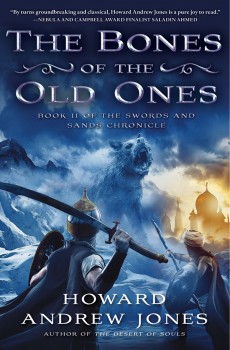 Gregory A. Wilson and Bradley P. Beaulieu interview Black Gate Managing Editor Howard Andrew Jones for episode 65 of Speculate!, the Podcast for Writers, Readers, and Fans.
Gregory A. Wilson and Bradley P. Beaulieu interview Black Gate Managing Editor Howard Andrew Jones for episode 65 of Speculate!, the Podcast for Writers, Readers, and Fans.